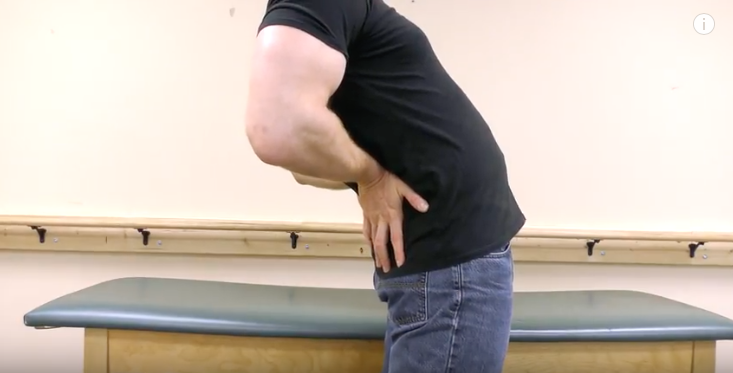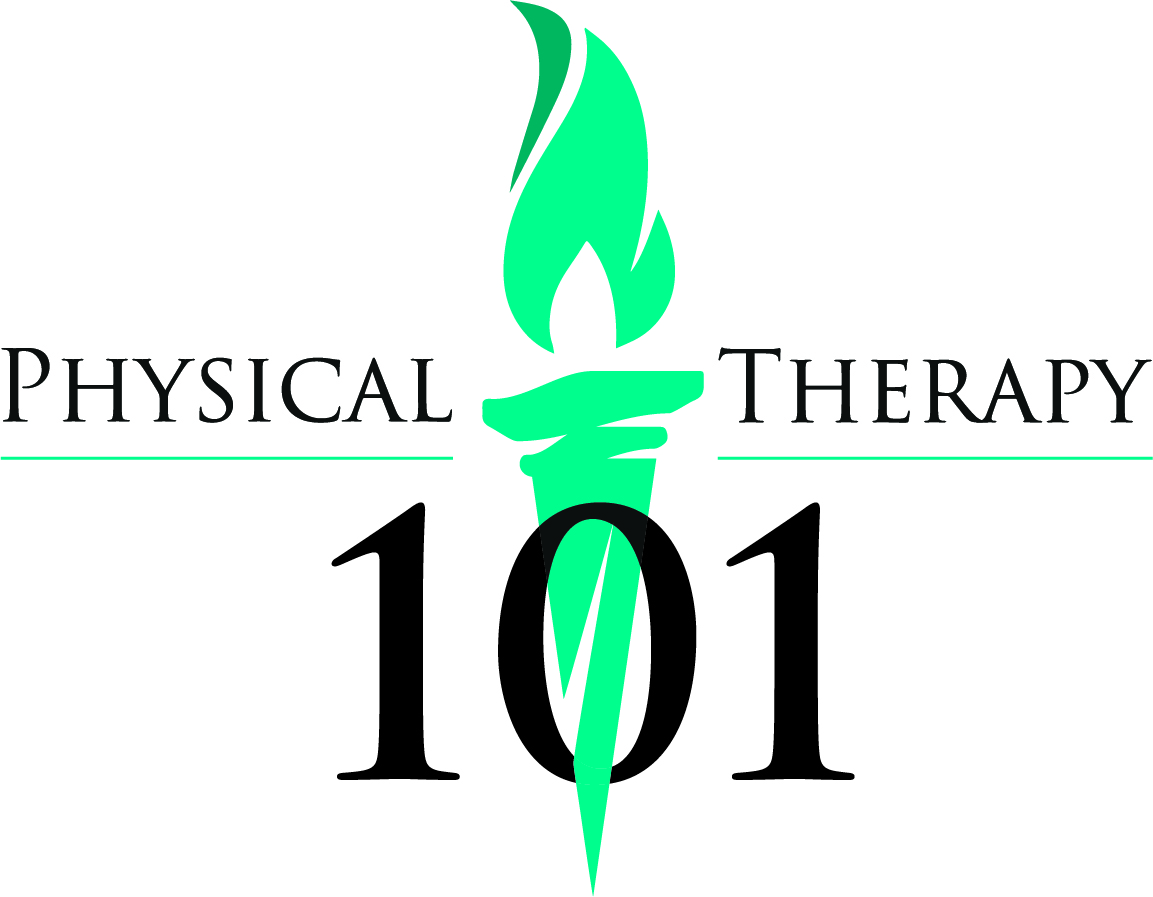Background
A Lumbar Herniated Disc typically occurs in patients ages 20-40. The function of the Lumbar Disc is to dissipate forces on the spine.
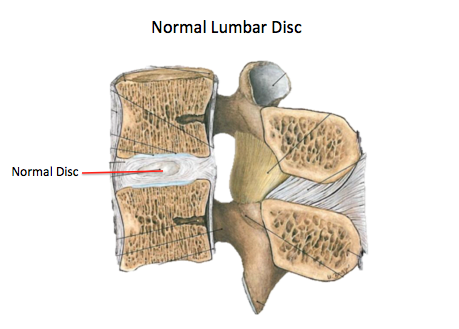
These discs are made up of components that retain fluid however due to the natural aging process, they become less hydrated over time. This loss of hydration can lead to the disc collapsing which puts strain on the outside of the disc. If too much force is placed on the disc then the fluid contained within the disc will leave and press on important structures. This can occur due to aging or if a biomechanical force is large enough.
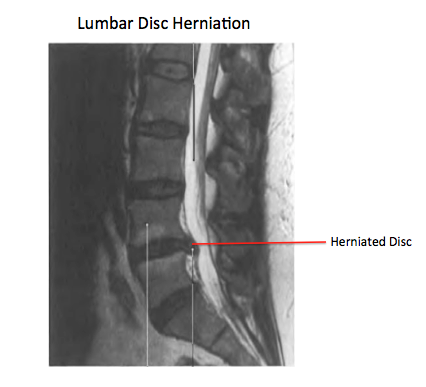 Typically postures that include a person bending over will increase the risk of lumbar disc herniation.
Typically postures that include a person bending over will increase the risk of lumbar disc herniation.
Recommended Products
Treatment
Begin by positioning yourself prone on a yoga mat or therapy table with a pillow or two under your chest. Allow your low back extend slightly. Hold this position for 5-10 minutes.
Prone Lying with Pillows
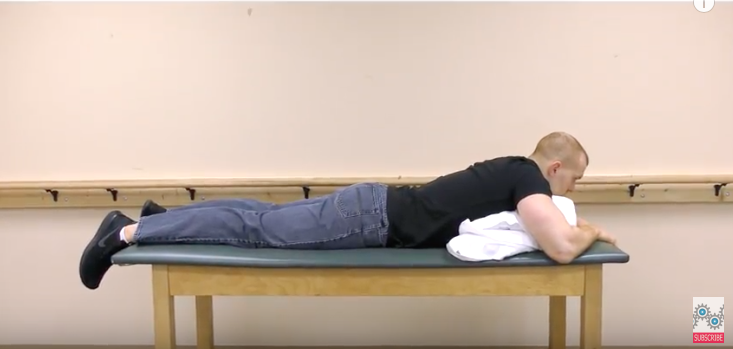
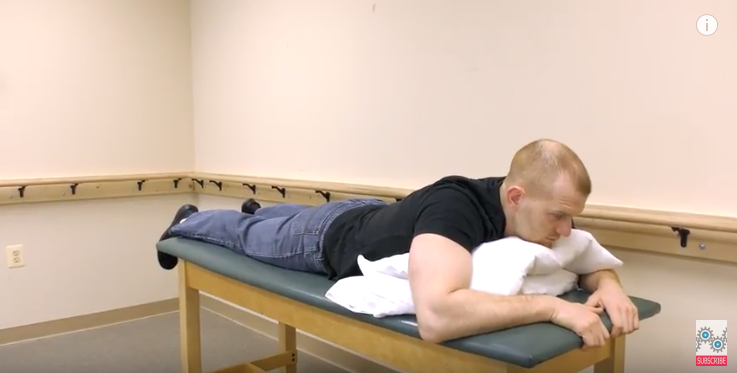
All of the following exercises should be done 10 times every two hours when you are awake. It is important to follow the progression that will follow.
Start with lifting your chest off the pillows for 10 reps. Extend at the low back, keeping your hips and elbows engaged with the surface of the yoga mat or therapy table.
Prone Press Up to Elbows
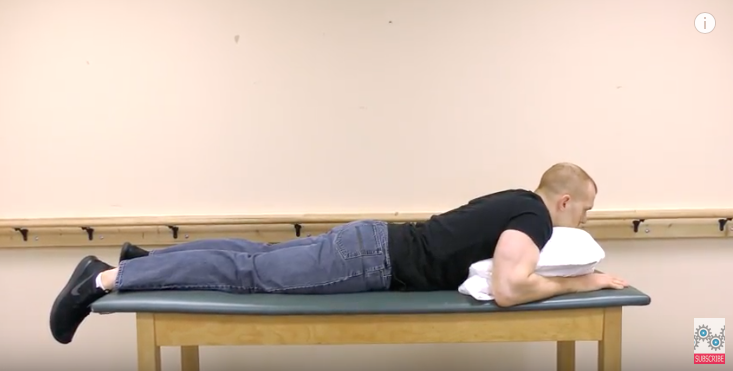
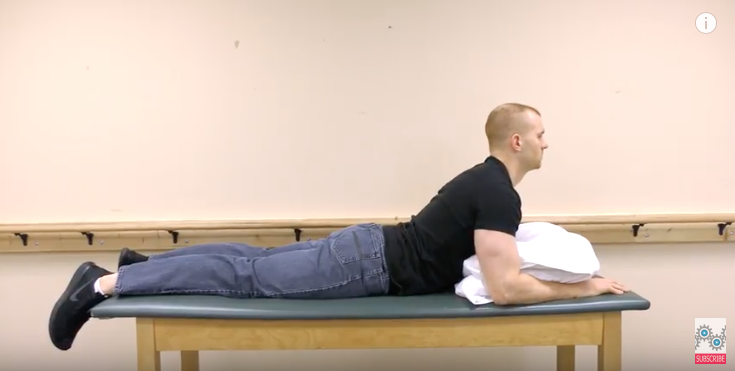
Next, press up with your hands and allow yourself to extend further back keeping a slight bend in the elbows. Again, make sure your hips are engaged with the surface. 1 set of 10 reps. is recommended.
Prone Press Up Elbows Bent
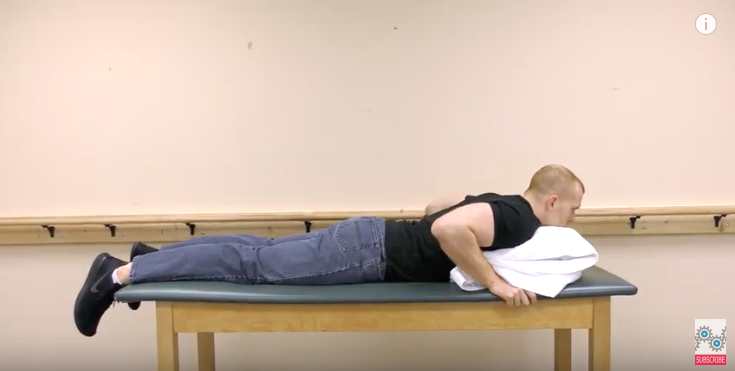
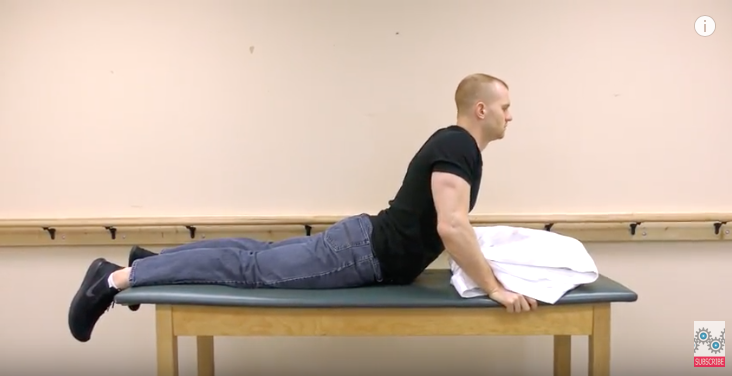
Now press up with your hands and fully extending the elbows. It is important that your hips remain touching the surface.
Prone Press Up Elbows Straight
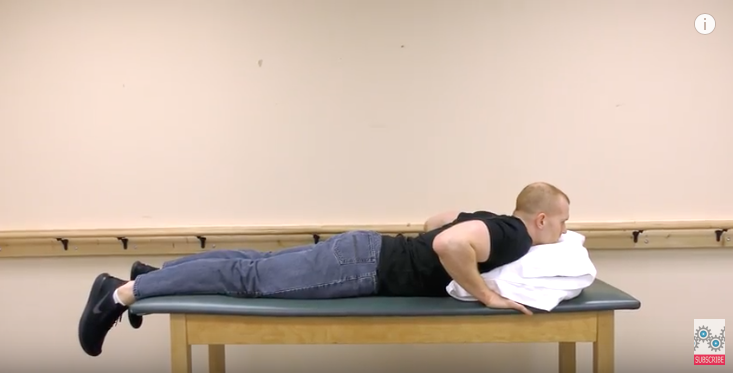
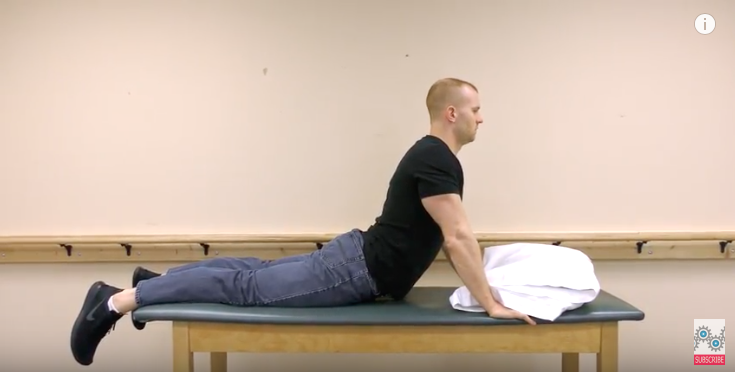
Lifting the hips off of the table is INCORRECT and should be avoided.
Incorrect - Hips off Surface
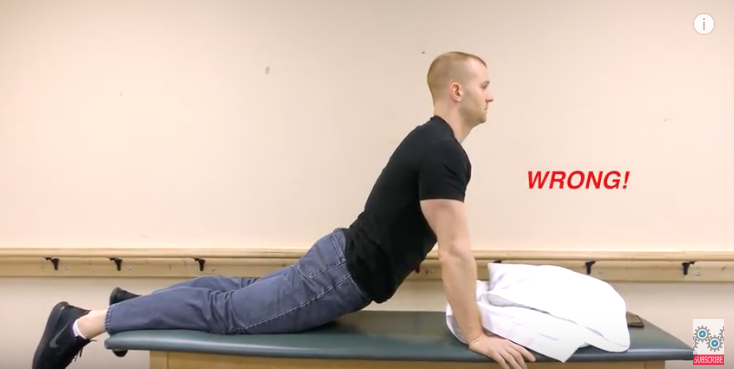
Rounding the shoulders forward is also INCORRECT because it can lead to shoulder pain.
Incorrect - Shoulders Rounded Forward
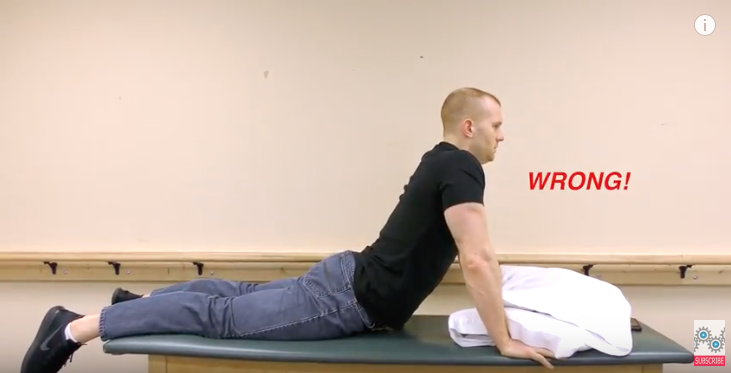
Here is the correct position with the shoulder back and the hips engaged to the surface.
Correct - Shoulders Back and Hips on Surface
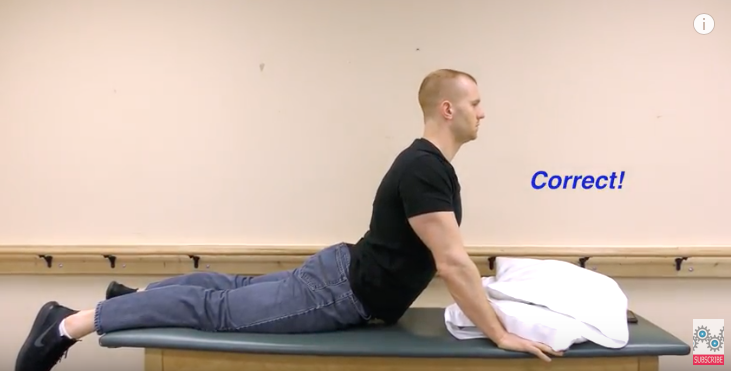
To add overpressure, exhale deeply when fully extended.

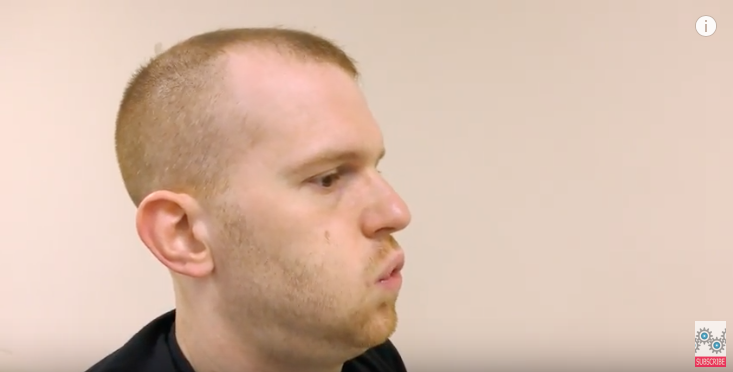
If you have a left side herniation, you may extend back with the lower half shifted slightly to the left. If it is on the right, shift the lower half to the right then extend. Make sure to go through the progression.
Hips Shifted Left for Left Side Herniation
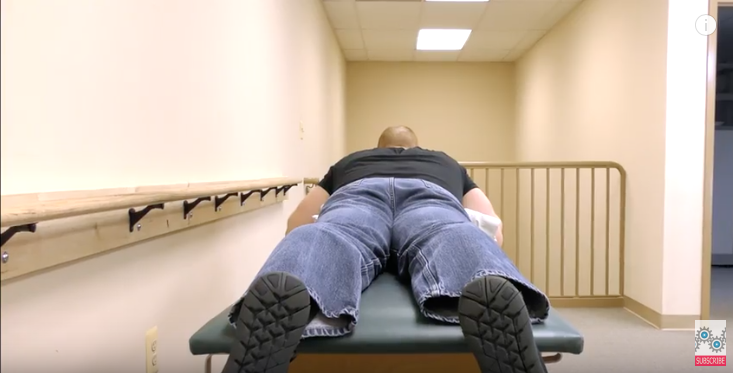
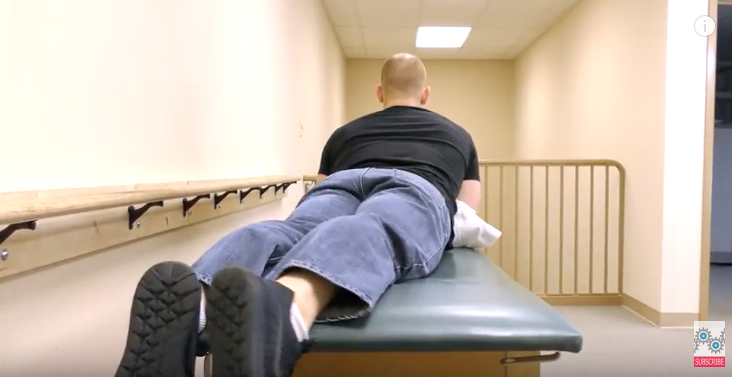

If unable to lay prone, extension can also be performed while standing.
Standing Back Extension
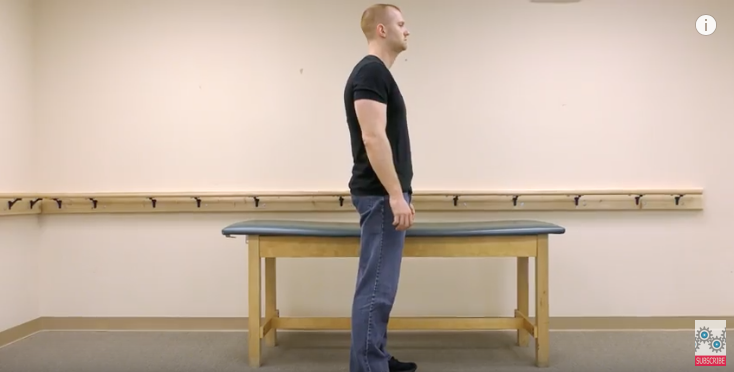
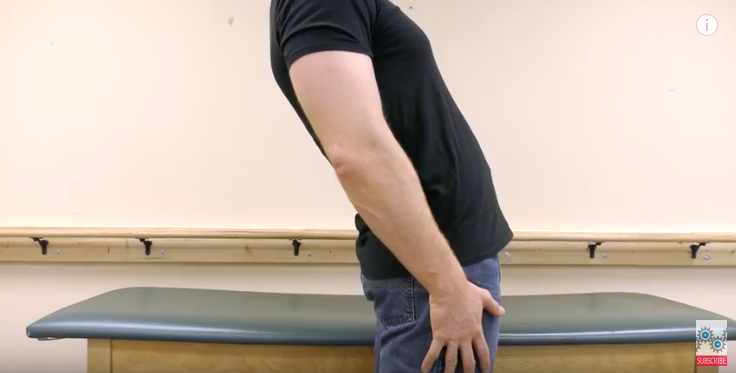
To add overpressure, place both hands on the lower back and push the hips forward.
Standing Back Extension with Overpressure
